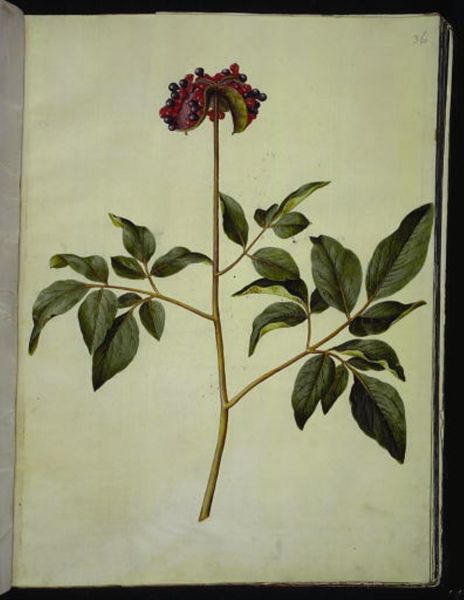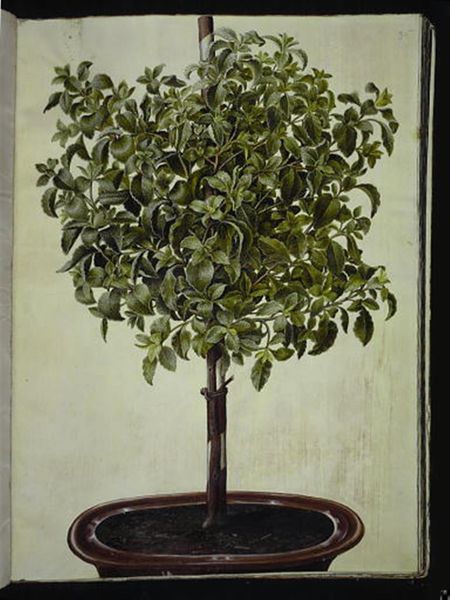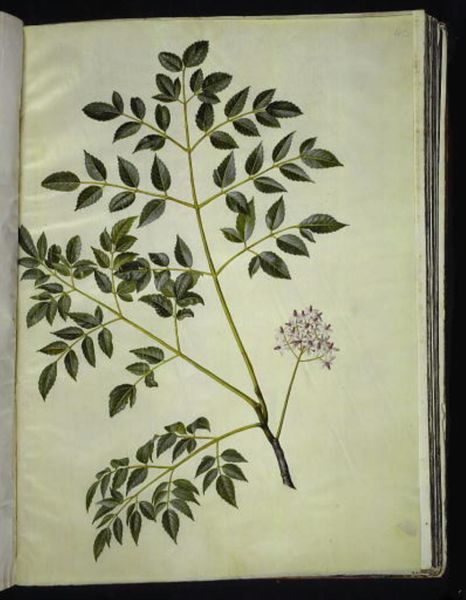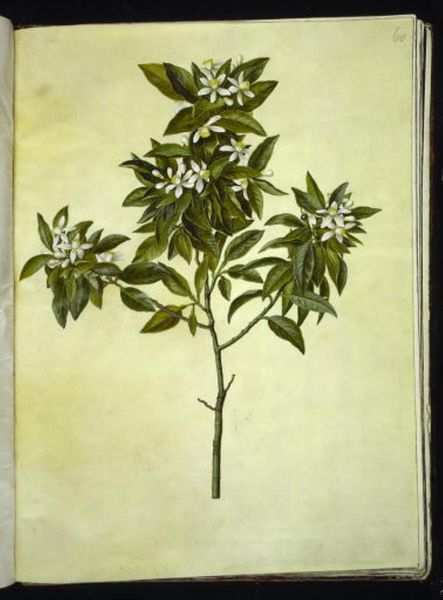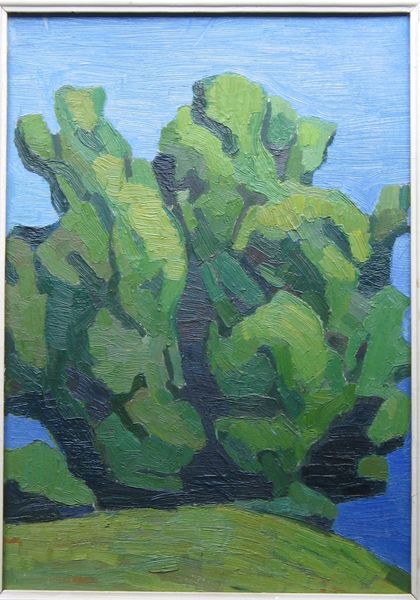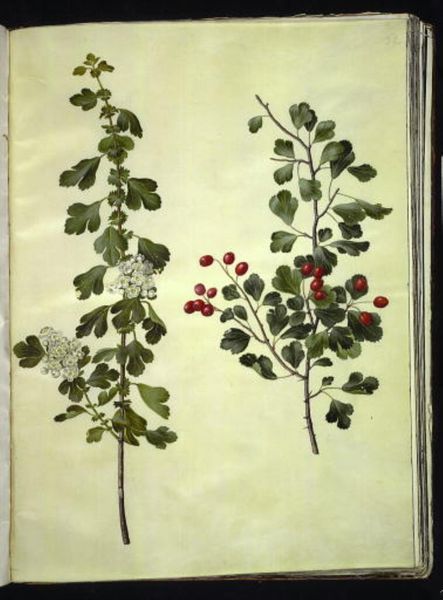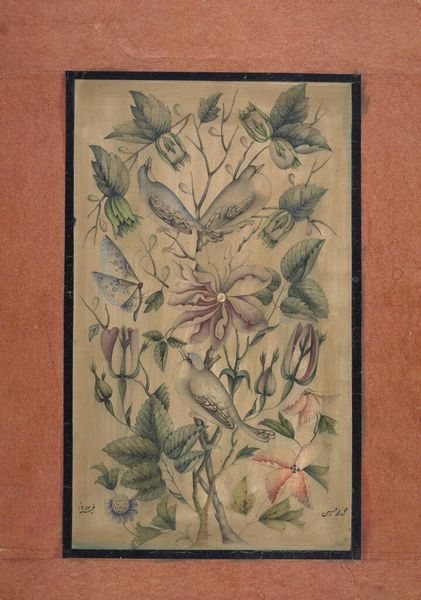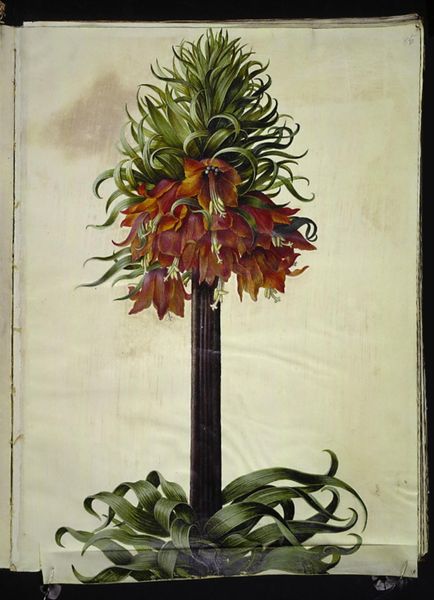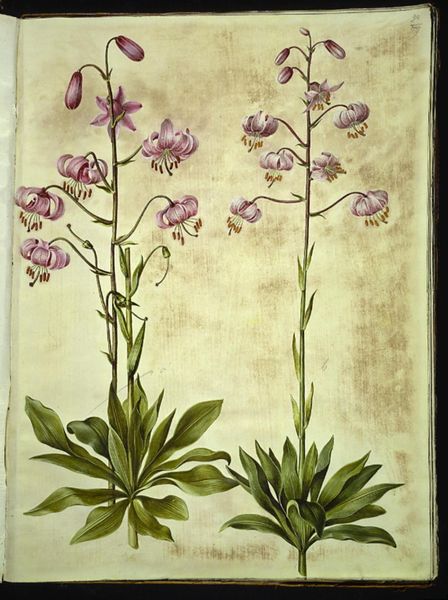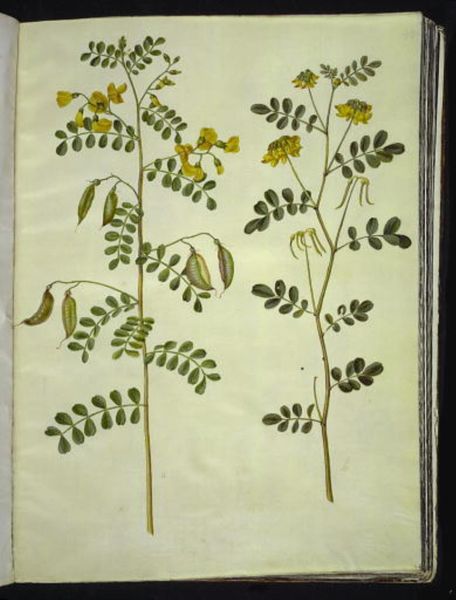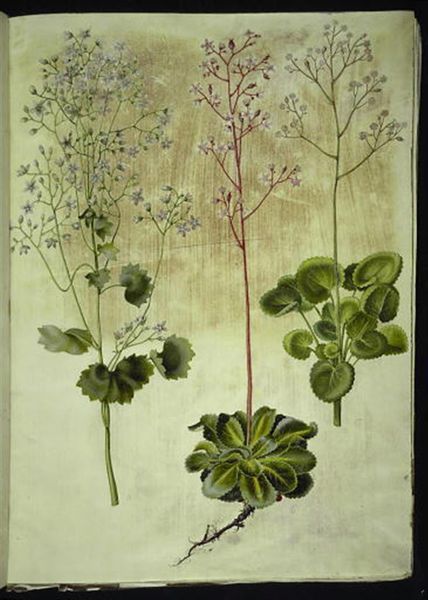
Dimensions: 505 mm (height) x 385 mm (width) (bladmaal)
Curator: Well, here we have "Daphne laureola," or laurbær-dafne, a work created sometime between 1649 and 1659 by Hans Simon Holtzbecker. It's currently residing here at the SMK. Editor: My immediate impression is quiet observation. Like peeking into a botanist's private notebook. The unassuming nature draws me in—it’s a record but feels so…intimate. Curator: It's remarkable, isn’t it? The medium itself adds to that feel; it's crafted using colored pencil and gouache, a beautiful, almost naive depiction rendered with academic skill. You sense that painstaking care. I think about the pigments Holtzbecker would have used, potentially ground and mixed himself, with binders made from animal products or tree sap...it all brings you closer. Editor: Yes, the very materiality speaks volumes. Think about where those pencils came from, the trade networks that supported the accessibility of such items, especially colored ones. This wasn’t a simple trip to the art supply store; it represents privilege and access, layered with specialized knowledge in both botany and artistry. I can almost smell the paper. Curator: And there's a definite touch of realism. Look at the veins in the leaves. Holtzbecker clearly wanted to represent this Daphne as accurately as possible, a blend of the ideal with observed reality. He was, after all, a court painter, accustomed to capturing minute detail with scientific precision. But here it’s married with… tenderness, if you will. Editor: Exactly, realism interwoven with societal positioning! The desire to record this specific Daphne plant could have easily been about utility, say a medicinal catalogue. This might have been important to whoever commissioned it for use as raw material! So it has both aesthetic appeal, scientific record, and commercial intentions bound within the colored-pencil and gouache on paper. Curator: That makes me think…is it just observation? Or something deeper? Daphne's story—her transformation to avoid Apollo's advances... Maybe this careful illustration, rendered with so much affection, is itself a commentary on transformation, preservation, maybe even an assertion of artistic power against, a patron perhaps who wasn't being particularly fair. Editor: See, this tension embodies the best art analysis: blending subjective readings with material realities. From mere plant depiction to tales of fleeing nymphs and power plays through material investigation… Fascinating. Curator: Yes! Suddenly a humble little drawing sings with narratives! It's more than botanical observation; it's about understanding the relationship between labor, myth, and, finally, a plant turning into art.
Comments
No comments
Be the first to comment and join the conversation on the ultimate creative platform.

